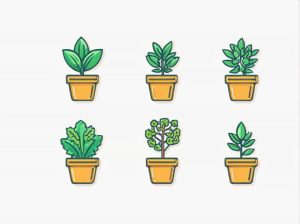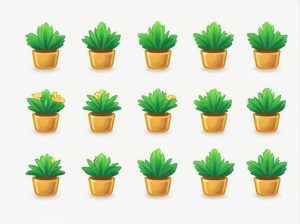In the life cycle of flowering plants reproduction plays a crucial role in ensuring the continuation of plant species. One of the most important processes in this cycle is the formation of fruit which develops from the ripened ovary of an angiosperm. But what exactly does this mean and why is it important?
This guide will explain how the ovary of a flower transforms into fruit its functions types and significance in plant reproduction and human consumption.
What is an Angiosperm?
Angiosperms also known as flowering plants are the largest group in the plant kingdom. They are characterized by flowers that contain reproductive structures including stamens (male parts) and carpels (female parts).
One of the key features of angiosperms is the presence of an ovary which encloses and protects the ovules. After fertilization the ovary matures into a fruit which helps in seed dispersal and protects the developing seeds.
What is a Ripened Ovary Called?
The ripened ovary of an angiosperm is called a fruit. Once fertilization occurs the ovary undergoes significant changes transforming into a structure that protects and aids in the dispersal of seeds.
Characteristics of a Ripened Ovary (Fruit)
- Develops from the ovary of a flower after fertilization
- Contains seeds which develop from fertilized ovules
- Can be fleshy (like apples) or dry (like nuts and grains)
- Aids in seed dispersal through animals wind or water
The Process of Fruit Formation
The transformation of an ovary into a fruit occurs in several steps:
- Pollination – Pollen is transferred from the anther (male part) to the stigma (female part) of a flower.
- Fertilization – The pollen fertilizes the ovule inside the ovary forming a seed.
- Ovary Maturation – After fertilization the ovary enlarges and undergoes chemical changes.
- Fruit Development – The ovary tissues develop into the outer fruit layers enclosing the seeds.
Functions of a Fruit
The ripened ovary or fruit serves several important functions:
1. Protecting Seeds
Fruits provide a protective covering around the seeds shielding them from environmental damage and predators.
2. Aiding in Seed Dispersal
Fruits help spread seeds through different mechanisms:
- Animals – Some fruits are eaten by animals and seeds are dispersed through digestion or carried elsewhere.
- Wind – Lightweight fruits such as dandelions are carried by the wind.
- Water – Coconuts and other buoyant fruits float on water to reach new locations.
3. Providing Nutrition
Fruits are rich in essential nutrients making them an important food source for humans and animals.
Types of Fruits
Fruits are categorized based on their structure and how they develop. The two main types are fleshy fruits and dry fruits.
1. Fleshy Fruits
These fruits have a soft edible pericarp (fruit wall) and are commonly eaten by animals. Examples include:
- Berry – Tomatoes grapes and bananas.
- Drupe – Peaches cherries and olives (fruits with a hard seed inside).
- Pome – Apples and pears (fruits with a central core containing seeds).
2. Dry Fruits
Dry fruits have a hard or papery outer covering and do not contain much moisture. Examples include:
- Legumes – Peas and beans (split open when mature).
- Nuts – Acorns and almonds (have a hard shell around the seed).
- Grains – Wheat rice and corn (seeds enclosed within a dry husk).
Differences Between Fruits and Seeds
Many people confuse fruits with seeds but they are different structures.
| Feature | Fruit | Seed |
|---|---|---|
| Develops from | The ovary of the flower | The fertilized ovule |
| Function | Protects and disperses seeds | Grows into a new plant |
| Example | Apple mango peanut shell | Apple seed mango seed peanut |
Importance of Fruits in Human Life
1. Nutritional Value
Fruits are rich in vitamins fiber and antioxidants promoting a healthy diet.
2. Economic Importance
Fruits like bananas apples and oranges are major agricultural products supporting economies worldwide.
3. Ecological Role
Fruits help maintain ecosystems by providing food for animals and facilitating plant reproduction.
The ripened ovary of an angiosperm is called a fruit and it plays a vital role in seed protection and dispersal. Fruits come in many forms from juicy berries to hard nuts and are essential for both plants and animals. Understanding how fruits develop and their functions helps us appreciate their importance in nature and daily life.



